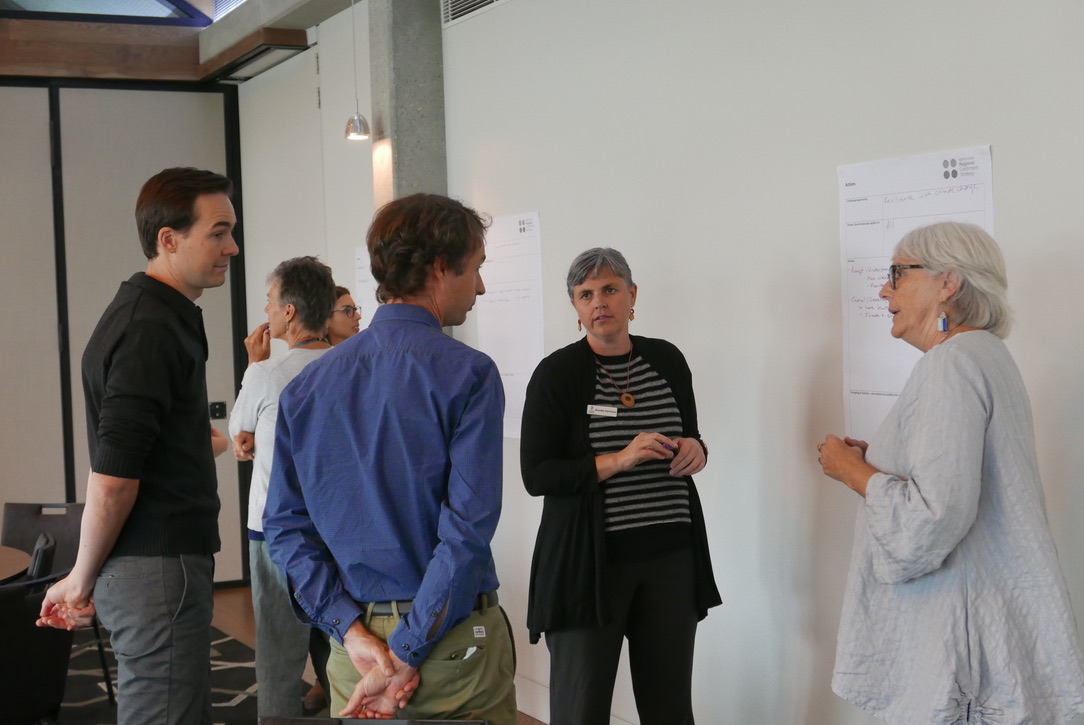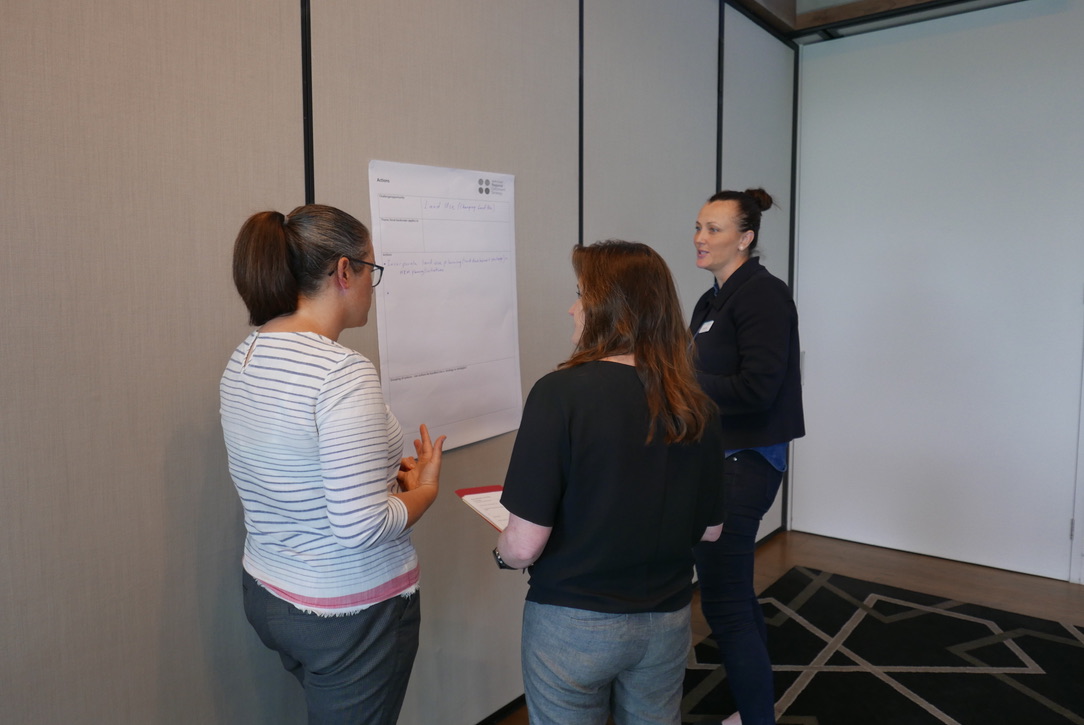There could not be a better time to plan for our region and communities. We continue to face legacy issues like land clearing, fragmentation of vegetation, weeds, pest animals and conflicting land use, whilst also contending with increasingly complex challenges such as climate change, pandemics and natural disasters.
This combination of challenges, and how they affect what we value and how we work to create a sustainable future, needs to be planned for locally and together. We cannot plan for our landscapes and communities in isolation, we must work together.
That is why we need your input into the RCS.
What is the RCS?
Established by the Victorian Government to provide a blueprint for natural resource management at a regional level, the Regional Catchment Strategy (RCS) has become much more. The RCS considers how people and place are entwined, what drives change and how we can deal with opportunities and threats to create resilient landscapes in north east Victoria. Priorities, targets, and actions included in the RCS provide an overarching framework to guide natural resource management planning and investment in local government, government agencies and community groups for the next six years.
The Insights Paper is out - what now?
The Insights Paper is part of the North East Regional Catchment Strategy (RCS) update process. It is the opportunity to share and test the inputs and perceptions received so far. It summarises our catchment condition, what is changing in the region, and what it means moving forward, including some challenges and opportunities to build a more resilient future for the North East region.
By sharing our findings so far, we hope to get further insights from our community that will inform the renewal of the Regional Catchment Strategy.
Read the Insights Paper by downloading from the link here and be ready to join the discussion. You may also like to download and read the Insights Paper Summary, the North East RCS End of Term Report 2020 and the RCS Socio-Economic Study.
The North East RCS Fact Sheet has been updated and is now available to download.
Have your say
Now is the time to speak up. The North East RCS update process is at a turning point. We are developing targets and actions to address the challenges and opportunities for north east Victoria identified in the Insights Paper, ahead of writing the draft Strategy.
To ensure the North East RCS reflects the interests and priorities of those who live, work, visit and connect with north east Victoria, we need your feedback. When reading the Insights Paper, take note of your impressions. How well did we capture the shared values, aspirations, drivers, trends, challenges, and opportunities for the North East region?
When reading the Insights Paper we want your feedback on the following:
- Do the shared values, critical attributes, changes and trend presented in this paper align with your understanding of north east Victoria?
- Is anything missing?
- What goals and objectives do you want to see articulated to protect and improve natural resources in north east Victoria?
- What actions could address some of the challenges and opportunities outlined in this document?
- What did you enjoy most about the Insights Paper? And what did you wish was different?




Above: Pictures from the RCS Insights Paper workshop in Wodonga on 22 March 2021
Have recent restrictions meant you have explored your local region more than you otherwise would? Or, if you are a regular visitor, you haven’t been able to visit the North East at all? It seems like a good time to think about what you love about the North East region.
We are seeking your input over the next 10 months, as we develop the North East Regional Catchment Strategy (RCS). We want to understand what you value about the North East Victoria’s rivers, landscapes and biodiversity and your vision for the region.
The RCS considers what drives change, how people and place are entwined and guides planning and investment for the region’s land, water and biodiversity for the next six years. It will consider how the region can deal with unexpected events, such as bushfires, flooding and COVID-19, that bring both challenges and opportunities.
What – is the role of the RCS?
The Victorian government set up the RCS as the guiding document for the region’s natural resources, and to support community involvement in integrated catchment management. Priorities, targets and directions included in this document provide an overarching framework for managing natural resources that flows through to strategic planning and investment in local government, government agencies and community groups.
The RCS:
-
Sets a vision for the North East region
-
Describes the links between various landscapes in the region and the people who live and work in them and visit them.
-
Describes the challenges and opportunities that need to be addressed.
-
Offers an overarching framework or blueprint to guide natural resource management planning and investment for the next six years.
This framework can be used by any individual, group or organisation to guide future natural resource management decisions in the Upper Murray, Kiewa and Ovens River valleys.
How – do I get involved/does it represent my input?
Individuals and community groups have multiple opportunities to provide input over the next couple of months. They include attending a Regional Catchment Strategy online community workshop; completing an online survey; entering the “my favourite place competition”; commenting on work completed; and attending an online drop-in session to ask questions. See details below for information about how to register. These will be updated each month.
Who else contributes?
We collaborate with agencies, councils and communities to gather local knowledge about landscapes within the region and how the community values and interacts with these. This knowledge is integrated with traditional ecological, technical and formal knowledge.
DECEMBER 2020 UPDATE
Thank you to everyone who has contributed so far to the update of the North East Regional Catchment Strategy.
We have received a wealth of information about our region from those live, work, visit and connect with north east Victoria.
We are now compiling this information and developing an Insights paper that will be released in late January.
Enjoy the Christmas-New Year break, which is an opportune time to think about what we want the future to look like and how we get there. We look forward to reconnecting with you all in January when we release the Insights paper and seek your comments.
My Favourite Place Winners
We are delighted to be able to announce the winners of the My Favourite Place competition, that has been part of the North East Regional Catchment Strategy update.
The selection of six winners reflects the wide array of entries that cover the diversity of landscapes that are valued throughout our community. The response has been outstanding and we thank everyone for sharing with us their passion for the region.
All the winning photographs and comments will be included in materials being produced as part of the North East RCS renewal; helping to show what people love about our region and what they connect with.
The winners are .......
Jeffe Aronson, for his photograph of Mitta Mitta River – “the largest and best whitewater river running community in Australia, and one of the finest and most pristine class 3 rivers anywhere”.

Stephen Curtain, for his image of Mt Bogong, the highest point in Victoria.

Michelle Forrer, for her image of Mt Bogong, capturing “its remoteness. To sit at the summit and enjoy the 360 degree views, you need to walk uphill for hours”.

Martyn Paterson, for his image of the Ovens River at Bright – “The crystal clear water, the changing moods and light, abundant birdlife”.

Rosina Suter, for nominating “Our Family Farm” as her Favourite Place. “Because we are passionate about the environment and our precious land - our natural waterways are treasured by us as we truly care and know it is our duty to protect where we live”.
Elisa Tack, for her image of Wodonga’s Federation Hill and description of her Favourite Place – “I can visit any time, there's lots of wildlife and great views. It's quiet. Federation Hill is a favourite place for our family. We love to take walks along and up the hill, enjoying the views across Wodonga and beyond. We love seeing the kangaroos and the woodland birds, from the little honeyeaters and scarlet robins to the gang gang cockatoos and soaring wedge-tailed eagles. There are trees that are good for climbing or sitting under, and plenty of quiet spots to enjoy a rest. Having the hill so close to our home means we can visit it as often as we like, and we always see something new each time”.

Engagement on Insights Paper - scheduled for January and February 2021. Look out for more details.
To download the North East RCS update fact sheet click here
For the latest NRM Update click here
Add Content...